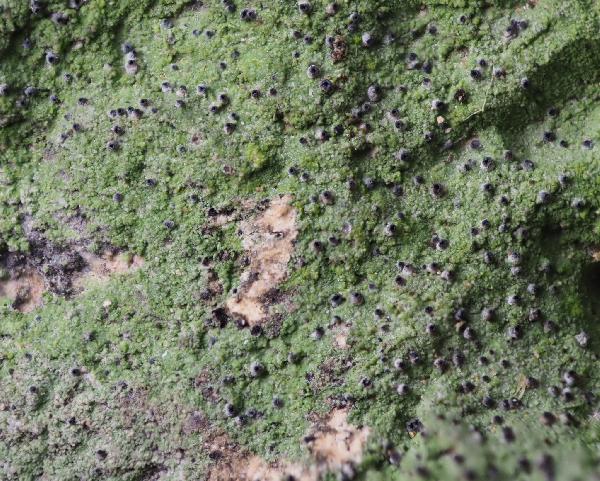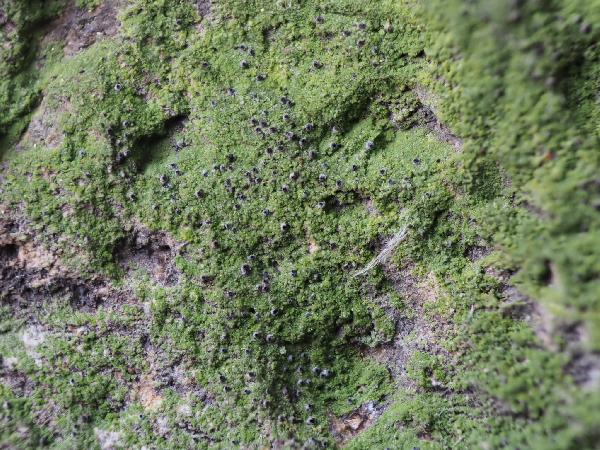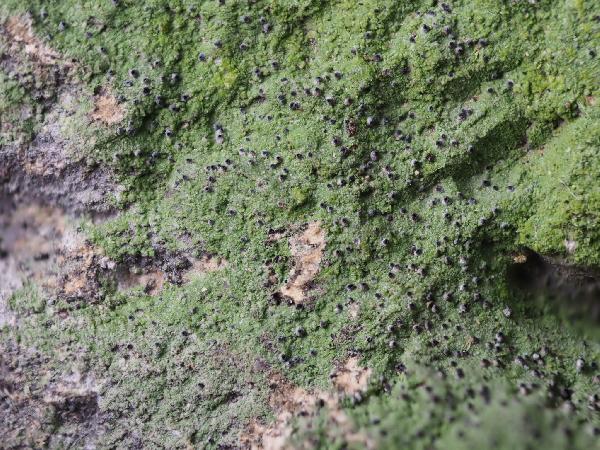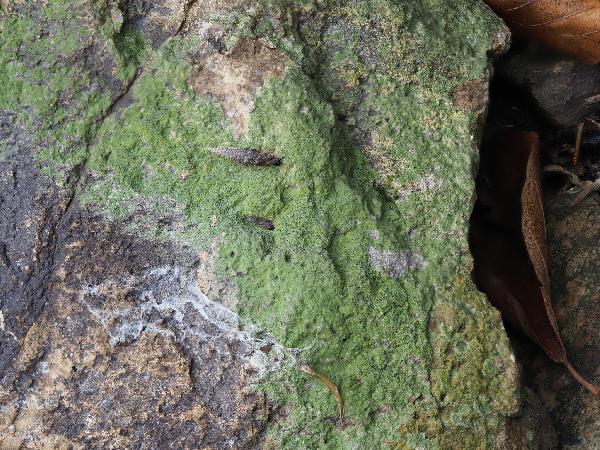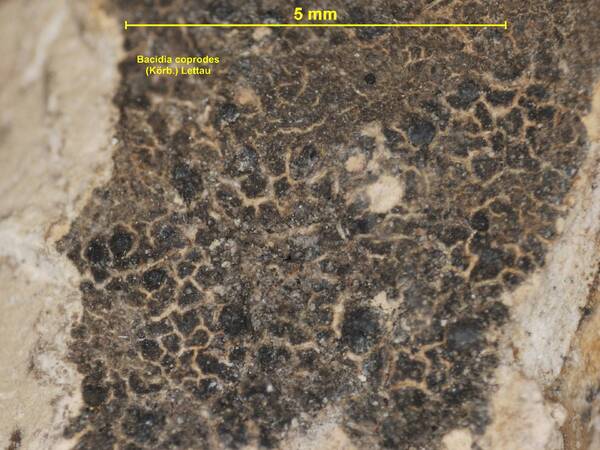Aquacidia trachona (Ach.) Aptroot
in Aptroot & al., Gorteria, 40: 13, 2018.. Basionym: Verrucaria trachona Ach. - Meth. Lich. Suppl.: 16, 1803.
Synonyms: Bacidia trachona (Ach.) Lettau
Distribution:
Description: Thallus crustose thinly episubstratic, poorly developed to rimose, pale grey-green to brownish, minutely granular-warted. Apothecia often absent, biatorine, black, sessile, 0.2-0.5 mm across., with a flat disc and a thin proper margin. Proper exciple dark red-brown, K+ purple; epithecium dark green to olive-green, K-, N+ red; hymenium mostly colourless (pale red-brown below, pale green above), 40-50 μm high,; paraphyses contorted, often branched and anastomosing 1-1.5 μm thick, the apical cells to 2 μm wide; hypothecium dark red-brown, K+ purple. Asci 8-spored, Micarea-type. Ascospores (0-)3-septate, hyaline, fusiform, 11-17(-20) x 3-4.5(-5) μm. Pycnidia black, sessile, 0.1-0.3 mm across, the ostiole finally widely gaping, the wall dark brown, K+ purple. Conidia short-cylindrical, 3-5 x 1-1.5 μm. Photobiont chlorococcoid, the cells 5-12 μm wide. Spot tests: thallus K-, C-, KC-, P+ orange-red, UV-. Chemistry: thallus with argopsin; apothecia and pycnidial walls with anthraquinonesNote: a mostly sterile, pycnidiate species mainly growing on sheltered, often rain-protected surfaces of siliceous rocks in shaded and humid situations. There are several records of Bacidia trachona from Italy (see Nimis 1993: 114), but according to Lop & Ekman (2004) the species has an oceanic distribution in Europe from Portugal to Scandinavia, whereas Mediterranean samples attributed to this taxon belong to T. coprodes. Its presence in the most humid parts of Tyrrhenian Italy, however, cannot be excluded.
Growth form: Crustose
Substrata: rocks
Photobiont: green algae other than Trentepohlia
Reproductive strategy: mainly sexual, or asexual by conidia and thalloconidia
Most common in areas with a humid-warm climate (e.g. most of Tyrrenian Italy)

Predictive model
Growth form: Crustose
Substrata: rocks
Photobiont: green algae other than Trentepohlia
Reproductive strategy: mainly sexual, or asexual by conidia and thalloconidia
Most common in areas with a humid-warm climate (e.g. most of Tyrrenian Italy)

Predictive model
